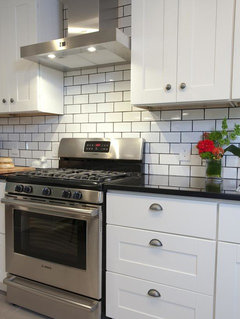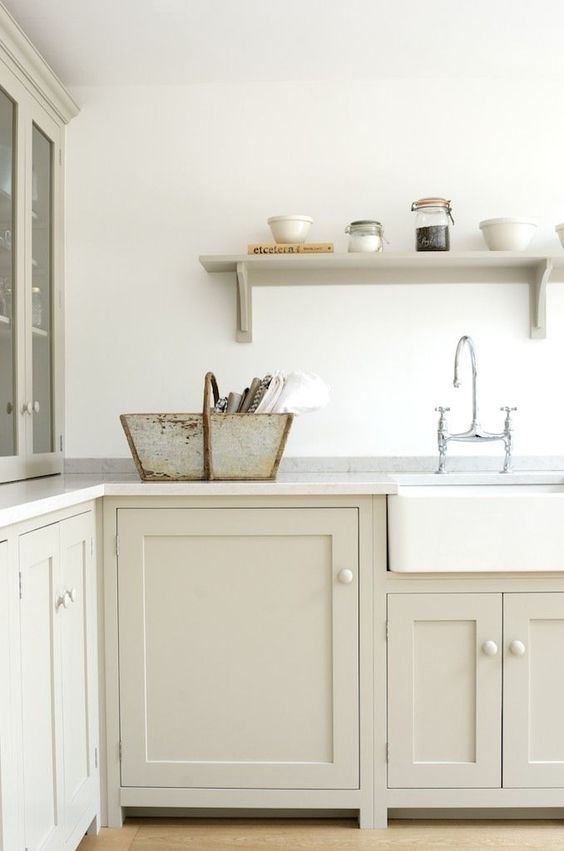Revamp Your Kitchen with a Groutless Backsplash
A groutless kitchen backsplash offers a sleek and modern alternative to traditional tiled backsplashes. With its seamless appearance and easy maintenance, it’s no wonder why homeowners are increasingly opting for this stylish option. In today’s post, we will discuss the benefits, installation process, design options, and maintenance tips for groutless kitchen backsplashes.

Benefits of Groutless Backsplashes
Groutless backsplashes offer several advantages over traditional tiled backsplashes. Firstly, their seamless appearance creates a clean and streamlined look that can visually expand the space and make the kitchen feel larger and more open. Without the interruption of grout lines, groutless backsplashes create a visually continuous surface that adds a modern touch to any kitchen design.
Another benefit of groutless backsplashes is their ease of maintenance. Traditional tile backsplashes with grout lines can be difficult to clean and prone to staining and discoloration over time. In contrast, groutless backsplashes feature smooth surfaces that are easy to wipe down with a damp cloth or sponge, making them ideal for busy kitchen environments.
Additionally, groutless backsplashes eliminate the need for grout, which can crack, chip, or discolor over time, requiring frequent repairs or replacement. By eliminating grout lines, groutless backsplashes offer a more durable and long-lasting solution that requires less maintenance and upkeep.

Installation Process
The installation process for a groutless kitchen backsplash varies depending on the material chosen. Common options include glass panels, stainless steel sheets, and solid surface materials such as quartz or acrylic. Regardless of the material, the key to a successful installation is proper preparation and attention to detail.
Start by measuring the area of the backsplash and determining the quantity of material needed. If using glass panels or stainless steel sheets, ensure they are cut to the correct size and shape before installation. For solid surface materials, such as quartz or acrylic, ensure they are properly sized and shaped to fit the space.
Once the material is prepared, clean the wall surface thoroughly to remove any dirt, grease, or debris. Apply adhesive or mounting hardware to the back of the material according to the manufacturer’s instructions, then carefully position it on the wall and press firmly to ensure a secure bond.
After the material is installed, use a level to ensure it is straight and evenly positioned. Allow the adhesive to cure fully before applying any additional finishing touches or accessories.

Design Options
Groutless backsplashes offer a wide range of design options to suit any kitchen style or aesthetic preference. Glass panels are a popular choice for modern kitchens, offering a sleek and reflective surface that adds depth and dimension to the space. Stainless steel sheets provide a contemporary industrial look, while solid surface materials offer endless possibilities for customization, including color, texture, and pattern options.
In addition to material choices, groutless backsplashes can also incorporate other design elements such as built-in lighting, decorative accents, or custom cutouts for outlets and switches. These additional features can enhance the overall look and functionality of the backsplash, adding visual interest and practicality to the kitchen space.
When choosing a design for your groutless backsplash, consider factors such as the overall style of the kitchen, the color and material of the countertops and cabinetry, and any existing architectural features or design elements in the space. By coordinating the backsplash with the rest of the kitchen design, you can create a cohesive and harmonious look that ties the room together.

Maintenance Tips
While groutless backsplashes are relatively low-maintenance compared to traditional tiled backsplashes, proper care is still essential to keep them looking their best. Regularly wipe down the surface with a mild detergent and warm water to remove any dirt, grease, or food residue. Avoid using abrasive cleaners or scrubbing pads that can scratch or dull the surface of the backsplash.
For glass panels or stainless steel sheets, use a soft cloth or microfiber towel to dry the surface after cleaning to prevent water spots or streaks. For solid surface materials, such as quartz or acrylic, avoid placing hot pans or dishes directly on the surface to prevent heat damage or discoloration.
Periodically inspect the backsplash for any signs of damage or wear and tear, such as cracks, chips, or loose mounting hardware. Address any issues promptly to prevent further damage and ensure the longevity of the backsplash.

Common Mistakes to Avoid:
Failing to properly measure and prepare the installation area, resulting in ill-fitting or misaligned backsplash material.
Using the wrong type of adhesive or mounting hardware can lead to instability or failure of the backsplash installation.
Neglecting to clean and prepare the wall surface before installation, results in poor adhesion and a less secure bond.
Overlooking proper maintenance practices, such as regular cleaning and inspection, which can lead to staining, discoloration, or damage to the backsplash material.

Can groutless backsplashes be installed over existing tile backsplashes?
Yes, groutless backsplashes can typically be installed over existing tile backsplashes, provided the surface is clean, smooth, and free of any loose or damaged tiles. Proper preparation and adhesive selection are essential to ensure a secure and long-lasting bond.
Are groutless backsplashes waterproof?
While groutless backsplashes are resistant to water and moisture, they are not completely waterproof. It’s essential to use caution and wipe up any spills or splashes promptly to prevent water damage or staining.
Can groutless backsplashes be installed by DIYers?
Yes, groutless backsplashes can be installed by DIYers with basic carpentry skills and tools. However, it’s essential to follow the manufacturer’s instructions carefully and take proper safety precautions during installation.
Are groutless backsplashes more expensive than traditional tiled backsplashes?
The cost of groutless backsplashes varies depending on factors such as the material chosen, the size of the installation area, and any additional design features or customization options. While groutless backsplashes may have a higher upfront cost than traditional tiled backsplashes, they often require less maintenance and upkeep over time.
Can groutless backsplashes be removed or replaced?
Yes, groutless backsplashes can typically be removed or replaced if desired. However, it’s essential to exercise caution and follow proper removal procedures to avoid damaging the wall surface or surrounding materials.

Our kitchen renovation: Backsplash with grout
Need help with Kitchen backsplash!

Kitchen Backsplash on Pinterest Stove, Cabinets and Glass backsplash

Dark Tile, Light Grout Kitchen Backsplash here’s another view of the previous tile

Backsplash Ideas

The No Backsplash Alternative to Subway Tile; Before & After Maria Killam

Related Posts:
- Cheap DIY Kitchen Backsplash
- Vinyl Kitchen Tiles Backsplash
- Small Kitchen Backsplash Ideas
- Modern Farmhouse Kitchen Backsplash
- Green Kitchen Backsplash Ideas
- Mexican Tile Backsplash Kitchen Ideas
- Rustic Stone Kitchen Backsplash
- Kitchen Backsplash Tile Ideas
- Decorative Kitchen Backsplash Ideas
- Kitchen Backsplash Tile Designs